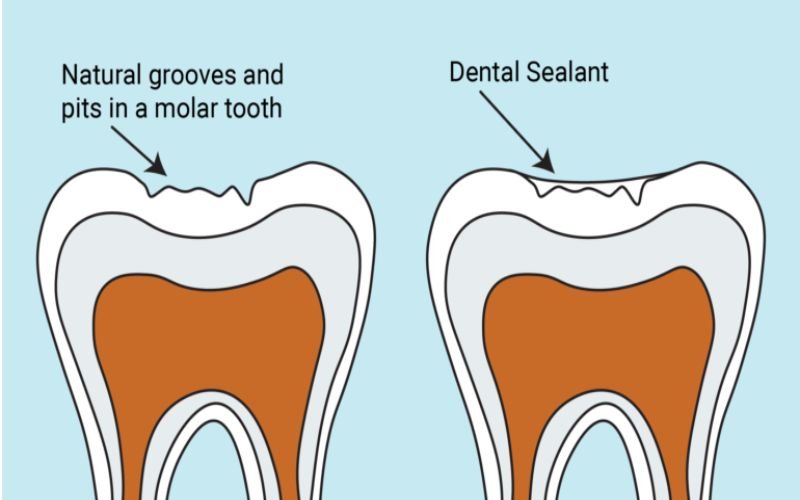
Menu
Dental Sealants
What is Dental Sealants?
Dental sealants are a preventive dental treatment used to protect the chewing surfaces of the back teeth (molars and premolars) from cavities and decay. Sealants are thin, plastic coatings applied to the grooves and pits of the teeth, creating a barrier that helps prevent food particles and bacteria from getting trapped and causing decay.

How Dental Sealants Work:
Cleaning:
- The dentist or dental hygienist cleans the tooth thoroughly to remove any plaque or debris from the surface.
Preparation:
- The tooth is dried and sometimes treated with a mild acidic solution to etch the surface, which helps the sealant adhere better.
Application:
- The liquid sealant is painted onto the chewing surfaces of the tooth, filling in the grooves and pits. The sealant flows into these areas to create a protective layer.
Curing:
- The sealant is then hardened using a special curing light, which helps it bond securely to the tooth.
Benefits of Dental Sealants:
- Cavity Prevention: Sealants provide a protective barrier against cavities by covering the deep grooves and pits where bacteria and food particles can accumulate.
- Non-Invasive: The application of sealants is quick and painless, with no drilling or anesthesia required.
- Cost-Effective: Sealants are a relatively inexpensive preventive measure compared to the cost of treating cavities and decay.
- Durability: Sealants can last several years before needing replacement or touch-ups, providing long-term protection.
Ideal Candidates for Sealants:
- Children and Teens: Sealants are commonly applied to children’s and teenagers’ molars as soon as their permanent teeth come in, usually around ages 6 and 12, to protect against cavities during their cavity-prone years.
- Adults: Sealants can also be beneficial for adults who are at high risk of cavities, have deep grooves in their teeth, or have not previously received sealants.
Considerations:
- Maintenance: Sealants should be checked regularly during dental visits to ensure they are intact and still providing effective protection. If they become damaged or wear off, they may need to be reapplied.
- Not a Substitute for Brushing: Sealants are a preventive measure but do not replace the need for regular brushing and flossing, which are essential for maintaining overall oral health.
- Application Limits: Sealants are most effective on the chewing surfaces of molars and premolars and are not typically used on the front teeth.